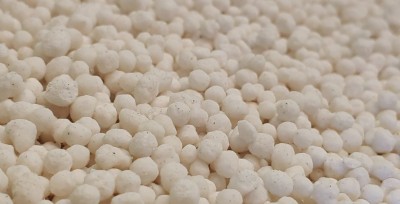Managing Pastures with High Fertilizer Prices and Drought, by Paul Beck

Managing Pastures with High Fertilizer Prices and Drought
Paul Beck, Oklahoma State University Extension Beef Cattle Nutrition Specialist
Prices for DAP, urea, anhydrous ammonia and UAN have all reached all time high prices. The cost per pound of actual N is over $1.13/pound for urea and 32% UAN. Last year we were complaining about the increasing cost of fertilizer, and it was only about half the cost it is now.
- Fertilization increases water use efficiency, this may be important in drier than normal conditions, but the high prices still has fertilization out of reach for most production systems.
- Each pound of actual nitrogen applied will add 30 to 40 pounds of forage production per acre in bermudagrass and Old World Bluestem pastures and hay meadows. The added forage production will cost about 3 to 4¢/pound at the current fertilizer prices, or about $60 to 80 per ton of increased hay production per acre.
- For stocker steers, we can get an extra 1.5 to 2 pounds of gain for each pound of nitrogen, so the cost of that added gain would be around $0.55 to $0.75/pound.
- In cow- calf operations, a calf value to N cost ratio of 2.5 would indicate fertilization is potentially profitable. A weaned calf would need to bring $2.87 per pound for fertilization to be profitable.
What should you do if you cannot afford fertilizer?
You have 2 choices, 1) apply fertilizer at a targeted rate or 2) don't apply any fertilizer.
In either case, you will need to improve management.
If a producer does not normally fertilize pastures and/or hay fields, then there is little consequence of not fertilizing since his stocking rate should already be matched to the natural productivity of the land. However, if the producer has been fertilizing pastures to support his livestock operation, then cutting back fertilizer will require improved management to increase the utilization of the forage and to allow enough rest between grazing cycles for the grass to remain healthy. Also the fertilizer that is applied must be targeted to specific times of the year at rates that match livestock need to prevent excess forage growth and waste of fertilizer value.
For each ton of hay removed from a field about 30 to 40 pounds of nitrogen, 14 pounds of phosphorus, and 45 to 50 pounds of potassium are being removed. When cattle graze or are fed hay most of the nitrogen, phosphorus, and potassium are returned to the pasture in excreta. So, improved grazing distribution of grazing and hay feeding will improve the distribution of recycled nutrients.
Weed control increases forage production. For each pound of broadleaf weed production, we see grass production decrease by at least a pound. Controlling weeds is therefore even more important in drought and high fertilizer situations.
In summary, with high fertilizer prices we need to improve forage management, cull the cowherd to reduce stocking rates, practice weed control, and consider seeding legumes in the fall to help out next spring.
Upcoming Events
Crops, Cows & Critters - Southwest New York Dairy, Livestock & Field Crops Newsletter Sponsorship
December 19, 2025
Our two forms of publications feature research-based and timely information from our four specialists, listed to the right, along with local event notifications and Cornell University outreach. This information is provided to participants who range from dairy, livestock, and field crops producers to agricultural suppliers and consultants.
Weekly Email Update: Shared with 625+ households who have signed up with our program.
Monthly Paper Mailer: To reach our stakeholders and farmers who lack internet access, we send out a monthly mailer where your company's logo and contact information would be featured with a mailing list of 330+ households.
If you sponsor our weekly and monthly publications you reach approximately 955 households.
Visit our website to view our newsletters!
2025 Cornell Food Beverage & Animal Feed Manufacturer Survey
December 19, 2025
Industry and Educational Advocates for New York State's Food, Beverage, and Animal Feed Manufacturing industries:
As you know, NYS has a diverse food and beverage manufacturing industry, in both the types of industries that exist and the wide distribution of firms by scale. Many manufacturing firms have strong backward linkages to agricultural production sectors in the state that support both farm-level and downstream food industry firms and consumers. In collaboration with the New York State Department of Agriculture and Markets, a team from Cornell University's Charles H. Dyson School of Applied Economics and Management has recently rolled out the 2025 New York State Food, Beverage, and Animal Feed Manufacturer Survey. The industry will benefit from an updated assessment of the industry that informs private and public investments and opportunities to support firm growth and improved profitability.
Boots in the Barn: Cornell Dairy Research Updates
January 13, 2026
January 20, 2026
January 27, 2026
February 3, 2026
February 10, 2026
February 17, 2026
February 24, 2026
Join us for some or all!
Announcements
No announcements at this time.





